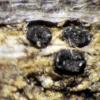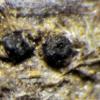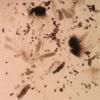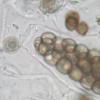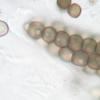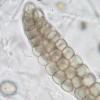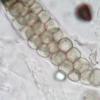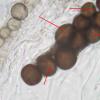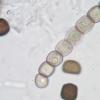
11-01-2026 20:35
Hello.A very tiny pyrenomycete sprouting sparsely

09-01-2026 17:41
Arnold BüschlenHallo, F. dilatata wird von vielen Bryoparasiten

10-01-2026 20:00
Tom SchrierHi all,We found picnidia on Protoparmeliopsis mur

07-01-2026 22:22
 Danny Newman
Danny Newman
Tatraea sp. on indet. hardwood The Swag, Great Sm

10-01-2026 01:18
 Danny Newman
Danny Newman
cf. Neovaginatispora fuckelii on indet. shrub Pre

07-01-2026 10:24
 Danny Newman
Danny Newman
Pezicula sp. on indet. hardwood Appalachian Highl

09-01-2026 10:08
 Blasco Rafael
Blasco Rafael
Hola, en el mismo habitat que la anteriorRetamaDia

08-01-2026 21:22
 Blasco Rafael
Blasco Rafael
Hola, He recogido esta muestra de Orbilia sobre Re

07-01-2026 17:29
 Marc Detollenaere
Marc Detollenaere
Dear Forum,On a barkless Populus I found some smal

10-11-2021 17:33
 Riet van Oosten
Riet van Oosten
Add-on topic http://www.ascofrance.com/forum/7059
Sporormiella-like on wood
Gernot Friebes,
31-05-2016 11:09
the photos of this interesting species were given to me recently and we are struggling with identification. It grows on indet. wood that was partly immersed in sandy soil in a very warm place (vineyard in eastern Austria), soc. Cryptovalsa protracta. The ascospores vaguely resemble Sporormiella or something similar in that they disintegrate into part spores with germ slits. The part spores measure about 12–13 µm (I can check the material and provide more accurate measurements if needed).
Any ideas are very welcome!
Best wishes,
Gernot
David Malloch,
31-05-2016 14:40

Re : Sporormiella-like on wood
Hi Gernot,
This seems similar to Sporormiella oblongiclavata, known from dry weathered wood in the southwestern USA. That species has ascospores 30-48 X 4-7 µm. See North American Flora, Series II, Part 13, Page 46. 1990.
Dave
This seems similar to Sporormiella oblongiclavata, known from dry weathered wood in the southwestern USA. That species has ascospores 30-48 X 4-7 µm. See North American Flora, Series II, Part 13, Page 46. 1990.
Dave
Gernot Friebes,
31-05-2016 15:18
Re : Sporormiella-like on wood
Hi Dave,
thanks for your help! It appears that I don't have this paper but it has been requested and sent on this forum before so maybe someone who has a digital version could send it to me? Thank you in advance!
Best wishes,
Gernot
thanks for your help! It appears that I don't have this paper but it has been requested and sent on this forum before so maybe someone who has a digital version could send it to me? Thank you in advance!
Best wishes,
Gernot
David Malloch,
31-05-2016 16:18

Re : Sporormiella-like on wood
I have a hard copy of that publication and can send you a scan of the relevant parts if no one can supply the whole pdf.
Dave
Dave
Gernot Friebes,
31-05-2016 17:36
Re : Sporormiella-like on wood
Thank you very much for your offer but I've received the publication now (a big thanks to Martin!). Do you know if the ascospores of S. oblongiclavata also separate into part spores? This is not mentioned in the original description. I will measure the whole ascospores and also check if a sheath is present.
Looking through Barr's publication the illustrations of Ohleriella also caught my attention. Maybe that's another possible genus in case S. oblongiclavata turns out to be a different species.
Best wishes,
Gernot
Looking through Barr's publication the illustrations of Ohleriella also caught my attention. Maybe that's another possible genus in case S. oblongiclavata turns out to be a different species.
Best wishes,
Gernot
David Malloch,
31-05-2016 18:08

Re : Sporormiella-like on wood
Hi gernot..
Sporormiella oblongiclavata and Ohleriella neomexiicana were two of several interesting fungi that I collected on dry wood in Arizona and Nevada. Unfortunately that was 1972 and I have not seen any of these fungi again. Too long for detailed memories. These two species differ greatly in the size of their ascospores, which may be some help. I don't remember if the part-spores of Sporormiella oblongiclavata separated or not.
Dave
Sporormiella oblongiclavata and Ohleriella neomexiicana were two of several interesting fungi that I collected on dry wood in Arizona and Nevada. Unfortunately that was 1972 and I have not seen any of these fungi again. Too long for detailed memories. These two species differ greatly in the size of their ascospores, which may be some help. I don't remember if the part-spores of Sporormiella oblongiclavata separated or not.
Dave
Gernot Friebes,
01-06-2016 13:02
Re : Sporormiella-like on wood
Hi Dave,
I checked the material and can report that the ascospores are up to 85 µm long so maybe even a bit too long for Ohleriella neomexicana but definitely excluding S. oblongiclavata. I couldn't observe a gel sheath but I did only find a few free ascospores so I can't say for sure if there is one present or not (maybe in young ascospores?). Since the material is rather sparse I only made a single preparation. I think I will preserve this material as Ohleriella sp. with a remark regarding the genus Sporomiella.
Thank you again and best wishes,
Gernot
I checked the material and can report that the ascospores are up to 85 µm long so maybe even a bit too long for Ohleriella neomexicana but definitely excluding S. oblongiclavata. I couldn't observe a gel sheath but I did only find a few free ascospores so I can't say for sure if there is one present or not (maybe in young ascospores?). Since the material is rather sparse I only made a single preparation. I think I will preserve this material as Ohleriella sp. with a remark regarding the genus Sporomiella.
Thank you again and best wishes,
Gernot
